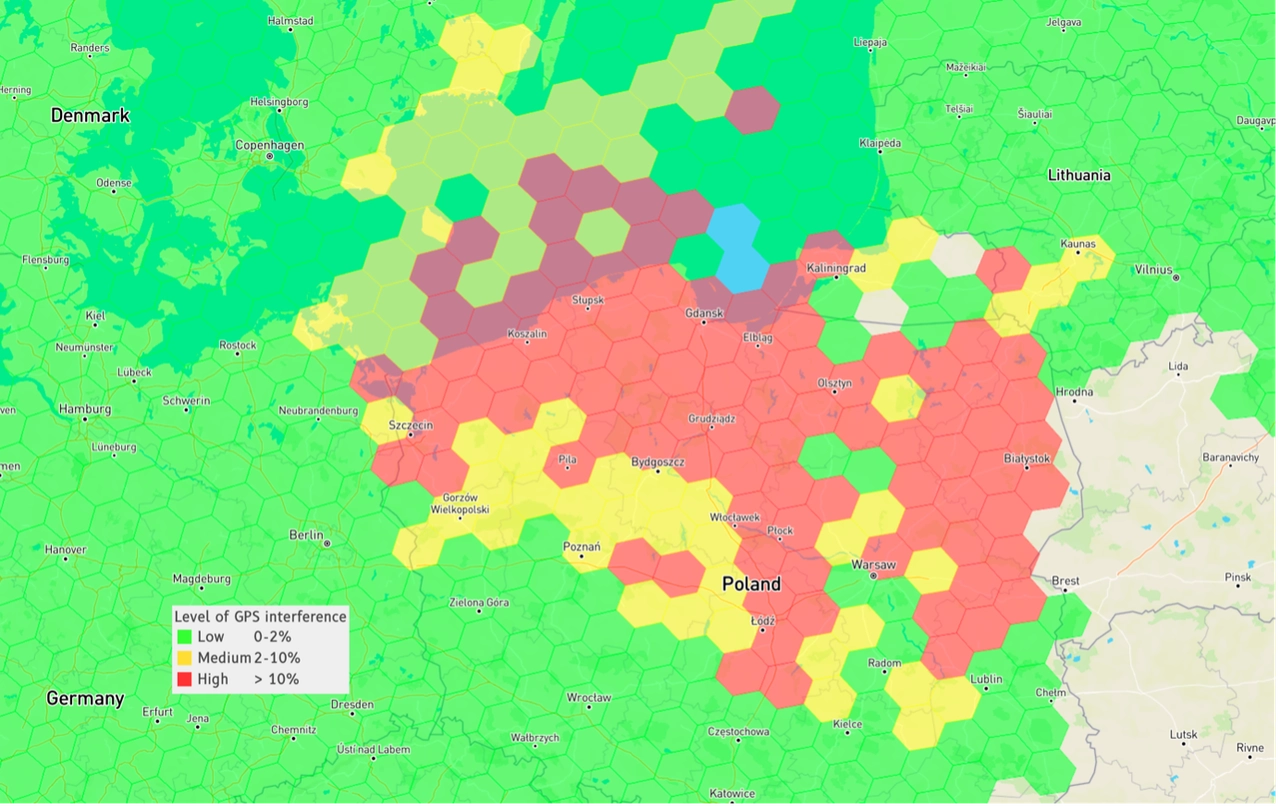On Jan. 16 and 17, unprecedented levels of GPS interference were observed in northern and central Poland. Similar levels of interference had been recorded on Poland’s Baltic Sea coast, as well as northwestern and central Poland in late December.
Polish news outlet Radio Zet suggested that the outages could have been caused either by NATO exercises in the area or tests of Russian electronic warfare (EW) systems emanating from the Kaliningrad region.
JOIN US ON TELEGRAM
Follow our coverage of the war on the @Kyivpost_official.
The press speculation seemed to be confirmed on Thursday by an Institute for the Study of War (ISW) report which said that the Swedish Military Intelligence and Security Service (MUST) had begun investigations into the disturbances. A Swedish spokesman Lt. Col. Joakim Paasikivi said there was evidence that Russia has previously interfered with GPS signals in northern Europe during Russian maneuvers in Murmansk Oblast and during NATO exercises
Russian media had reported that EW units of the Russian Baltic Fleet were training on the multi-functional Borisoglebsk-2 EW system in the Russian Kaliningrad exclave since mid-December. The suggestion that Russia has positioned EW capabilities in the Kaliningrad exclave, which can significantly interfere with navigational systems in Poland and the Baltic region, is cause for concern.
The online gpsjam.org, which monitors civilian GPS interference globally and is updated daily, has published an online interference map for Poland on Jan. 16. It shows the extent of GPS problems across much of the country, with the highest level near and around Kaliningrad.

Video Shows Drones Destroying Russian $130 Million Missile System in Donetsk
Screenshot of gpsjam.org map of GPS interference in Poland on Jan. 16, 2024
According to a Jan. 18 Newsweek report, Jukka Savolainen, a representative of Finland’s Hybrid Competence Center, said that GPS jamming was detected in eastern and southeastern areas of NATO’s newest member earlier in January, which they believe may have been “intentionally caused or a by-product” of Russian military activities.
Recent events in Ukraine indicate that the EW war between Russia and Ukraine was also becoming more intense.
Vadym Skibitsky, a spokesperson for Ukraine’s military intelligence agency (HUR), said on Thursday that Russia had modified its Kh-101 cruise missiles to provide increased counter-EW protection.
Earlier, Ukrainian Air Force Spokesperson Yuriy Ihnat noted that Ukraine had used EW combined with an analysis of Russian flight patterns to neutralize more than 20 enemy missiles, including three Kinzhal hypervelocity weapons, during its air defense against upwards of 40 missiles launched against Ukraine on Jan. 13.
You can also highlight the text and press Ctrl + Enter












